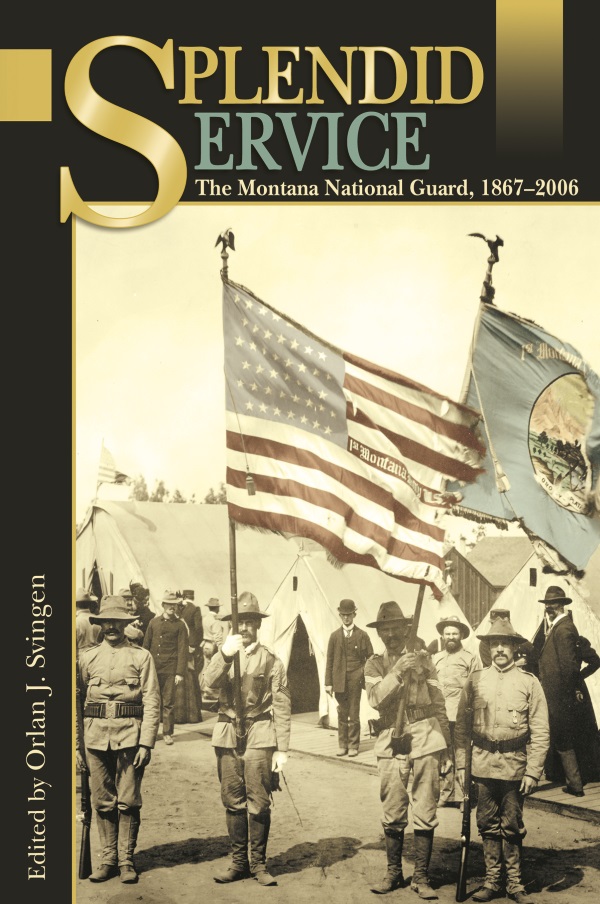Description
“Recruitment efforts were already underway…advertisements in the Montana Post in early May 1867 promised that the troops were entitled to all the plunder they could capture. One advertisement went so far as to offer ten dollars for every scalp taken.”
Although the history of the Montana National Guard is still being written as its members continue to serve around the globe, the seeds of this long-standing military organization germinated in 1867, when the territory’s acting governor organized a rag-tag militia force in response to widespread fear of impending Indian uprisings against the white population. It was a fiasco that cost the government dearly. Yet from that humble beginning arose a far more worthy band of soldiers, serving honorably during natural disasters, the Spanish-American War, the Mexican border crises, labor disputes, both World Wars, the Cold War, the Vietnam War, Desert Storm, and more.
Splendid Service recounts the proud moments and important achievements, and the painful failures and heart-breaking sacrifices, that the Montana National Guard experienced from 1867 to the end of the twentieth century. It chronicles how state, national, or international developments in politics, law, funding, public sentiment, and more affected the role Guardsmen played in assisting or protecting local communities, federal and state agencies, and the United States. The volume describes the process of repeated reorganizing and restructuring as state and federal governments sought to meet new challenges. It highlights some of the individuals whose contributions fostered the success of Montana’s armed forces, and describes the difficulties its leaders faced, including lack of funding and supplies, inadequate facilities and training camps, and the state’s large geographic area. Other aspects of military life, such as the daily camp routine, drills and training, competitions, and advances in equipment are detailed as well. The long-standing and commendable service of the Montana National Guard has indeed left a legacy for future generations.
“Three days after arriving in camp, the Second Regiment began its regular schedule. At five each morning, reveille sounded, followed by twenty minutes of exercise, usually in the form of a two-mile march. Breakfast commenced at six, and a two-hour drill began at seven. The troops ate dinner at noon, drilled in the afternoon from three until five, had supper at six, and then spent the evenings exploring Douglas, relaxing in camp, or engaging in guard, fatigue, or kitchen details.”
“In September 1917, one battalion of Montana’s 163rd arrived at Camp Greene in North Carolina, where it began training with regular army troops…[They were taught] combat bayonet techniques, trench digging, how to construct and throw hand grenades, and how to make barbed wire entanglements.”
Photographs / maps / notes / bibliography / 544 pages
Additional contributors:
Brigadier General Bill Yeager, Foreword
Brigadier General Hal Stearns, Foreword
Janet Creighton
Michael H. Evans
Carol Scally Grigas
Richard K. Hines
Suzanne Julin
Mari Hillestad Knirck
Diane L. Krahe
Dwayne A. Mack
John W.W. Mann
Susan Paras
Jennifer Ross-Nazzal
Shirley Stephens
Michelle Tabit











